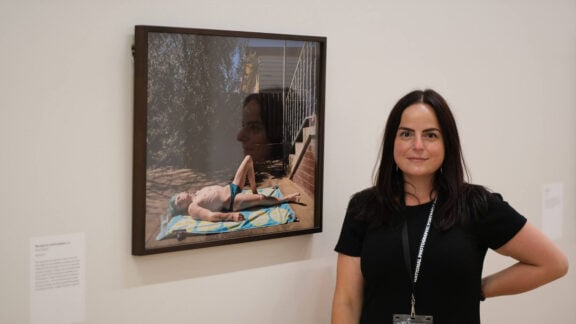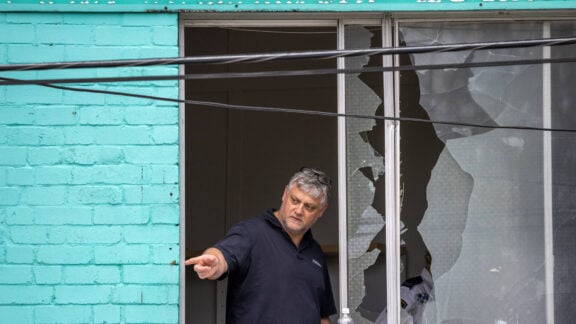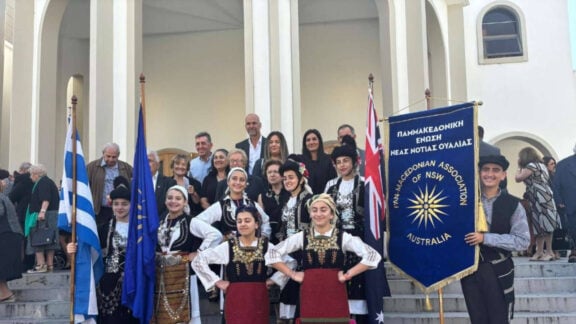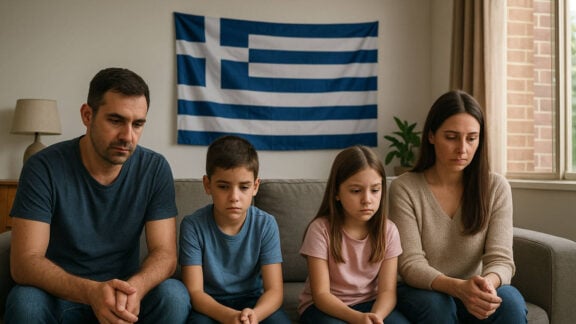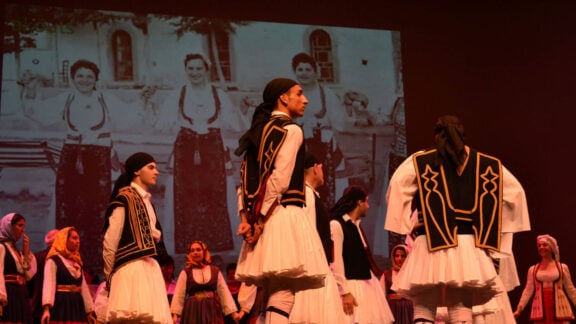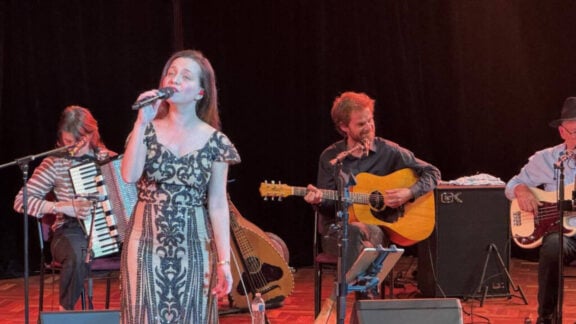I have just spent five days trying to control all my senses; but especially sight, taste, smell, and that rare one that only one in every 1000 people have – synaesthesia, where one sense triggers the memory and feeling of another. I’m pretty sure I’m one in a thousand.
I booked a pensione on Chios via the internet in the area called Kamobs. I arrived in Chios in the early evening and was driven to my pensione from the airport through an amazing labyrinth of high walls and big stone homes that belonged – and in some cases still do – to the titled gentry dating all the way back to the Genovese occupation. As strongly as the spectacle was arousing my sight, I cannot describe the sensation of the smell.
Kambos is the area where all the citrus fruit is grown, and as it is spring and all the trees are in bloom, the smell was overpowering to say the least; heady and intoxicating. The pensione I stayed in is one of those homes with a history that goes back to the Italians, as do the citrus trees. Citrus cultivation came to Greece with the Italians in the 16th century, who got it from the Spaniards, who in turn were introduced to it by the Arabs who found it in South East Asia.
Most of these homes have been turned into pensiones as they have changed owners a few times over; there are only a handful that are still in the ownership of the original families. These families had coats of arms as can be seen on the gates of most of the estates. The orchards are still being cultivated but as with all things time has caught up and current owners are turning to creative and original enterprises, all within the existing culture. Perleas (the name of the orchard where I stayed) have turned one of the buildings into a factory, really just a fancy kitchen, where they make, on a commercial scale, jams, ipovrihio (spoon sweets), loukoumia, chocolates, sweet pites, pasteli, and a few other things that I did not note thinking I would remember it all.
Some of the unusual flavoured jams include orange with chestnuts and cinnamon (that I managed to dig into for breakfast) and citrus blossom, and the spoon sweets feature flavours such as orange with cocoa and coffee or pumpkin with honey and almonds, although the ipovrihio that caught both my eye and my salivating mouth was vanilla with vissino. Loukoumia flavours include lemon, mandarin, orange, fig and lemon, ginger and tangerine.
There were also collections of pasta made on site with orange flavour, squid ink, and saffron from Kozani – arguably the best saffron the world.
Most importantly, this orchard is organically cultivated and all natural. I walked through the orchard feeling like I was walking in paradise. The kitchen is open for coffee, tea and sweets, as the women in the kitchen also make daily sweets in the tapsi. The sweet-making workshop is aptly named ‘Citrus’.
While on Chios I had a taxi drive me around as I had little time and a lot to see. My driver was a young man who was born and brought up in New York and brought his young family back to Chios to cultivate the mastic trees he inherited – 1,500 of them. He lost one third of the crop to the devastating fires last summer. He took me to every corner of the island and was trying to find the ‘lalades’, as they call the wild tulips locally. Did you know that the Dutch took the red wild tulip from Chios and cultivated it commercially and created all the other colours? I did not see any, but we all know they are there, and I did see myriads of chamomile and red poppies.
Next time you’re in Greece, do something a little different – go discover its natural beauty and history. There is more to Greece then Mykonos and Santorini.
We went to a Byzantine Monastery that has been there since the 11th century, high up in the mountains. The building is a prime example of the Byzantine period and the mosaics inside are breathtaking. They also keep the skulls from the massacre of Chios on display – I personally wish they did not.
But my favourite here is the medieval village of Mesta, heritage protected, made of local stone, where all the houses are joined to each other with arches, therefore creating streets that are arched. This was for protection from invaders, pirates and local bandits, as one could escape from one house to the other if on the run. There is also Pyrgi with its Moorish decorations on its buildings.
Having said all that, I ate the best loukoumades I have ever had in my life in Chios. Crunchy on the outside and almost empty on the outside, not too sweet – the only problem was I had eaten so much food that when the loukoumades came I could not finish them.
I then found myself across the sea on the coast of Turkey, eager to see the village of Alacati (Alatsata as my mother-in-law use to call it); my father-in-law was born here. UNESCO has deemed it a world heritage site and it is truly beautiful. All the old homes have been restored (back in the day they were all owned by Greeks as it had a population of almost 14,000 and only 132 were Turks). I cannot praise the town enough. The cobblestone streets, the immaculate building restorations and, as I am a foodie (God forbid if I lived here and on Chios, I would be as big as a bus), I was told to go to Asma’s kitchen. I was thinking this was the name of the restaurant, whereas in fact it was just a kitchen space on the ground floor with three women cooking and two tables outside – goddesses all of you, can you please help my expanding waistline?
The hotels in Alacati are all large old homes that have been turned into boutique hotels. The breakfast table was like nothing I have ever seen or experienced. It is not a big buffet where you go and help yourself, rather, you sit at your table and the buffet comes to you, and in a daze you have no idea where to start or to finish, as my stomach soon told me.
The people are friendly and polite and if it was not for the language you could be in Greece somewhere. The only draw back is that no one speaks English and it is often difficult. Most tourists seem to come from other parts of Turkey from what I observed.
I then hired a taxi and drove all the way to my mother-in-law’s village Karaburni (Karabourna, as she use to call it), and I wish she were still alive for me to talk to. With sixty odd kilometres of mountain on one side and sea on the other, my eyes could not take any more, and at one stage I became very emotional but I pulled myself together fast as I was also feeling a little car sick from the winding road and the never ending breakfast.
We arrived at Karabuni – a village in need of a face-lift – but geographically it is located where only the gods would have chosen to live. The scenery takes your breath away; built high on the side of a mountain, overlooking the Aegean. The whole district is truly spectacular, I cannot praise it enough nor can I ignore its history.
On a last note, on Chios and along the coast from Alacati all the way to Karaburni I was impressed by the number of windmills gathering clean energy. I ask what the matter is with Australians and their winding ways when it come to windmills. Windmills have been part of man’s way of gathering energy for millennia.
I found more than just the windmills that tie up our cultures between Greece and Turkey. Only the Aegean separates us.
Advertisement
From Chios to Turkey – an onslaught to the senses
Food writer Dora Kitinas-Gogos is in the island of Chios tantalising all her seven senses, and then to the coast of Turkey, and the village of Alacati


